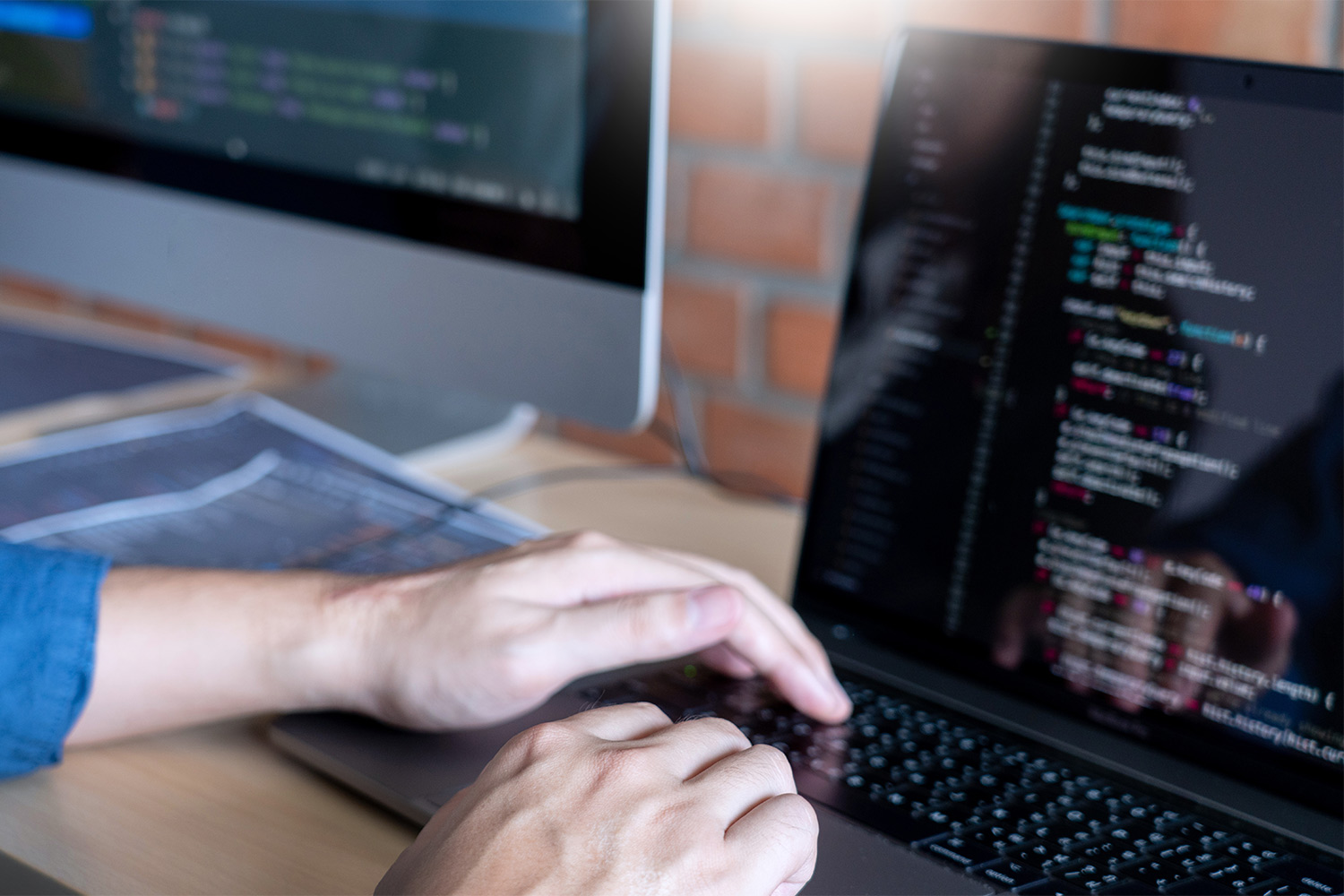Individual face-to-face in-depth interviews, in the UX laboratory with a one-way mirror, used to be a dream for all UX researchers. But in the first quarter of 2020, we woke up in the new reality that each of us must get used to. We must forget about face-to-face UX tests for some time, for the sake of the respondents’ and our close colleagues’ health. And you know what? Based on our case study, we can tell that it’s possible to transform the laboratory test into a 100% remote test. We now think that remote testing is even better than laboratory testing. We want to share with you our conclusions from remote UX research case studies, as well as our know-how. We will also give you some tips for an online interview, tell you how to conduct user research remotely and suggest some online interview software.
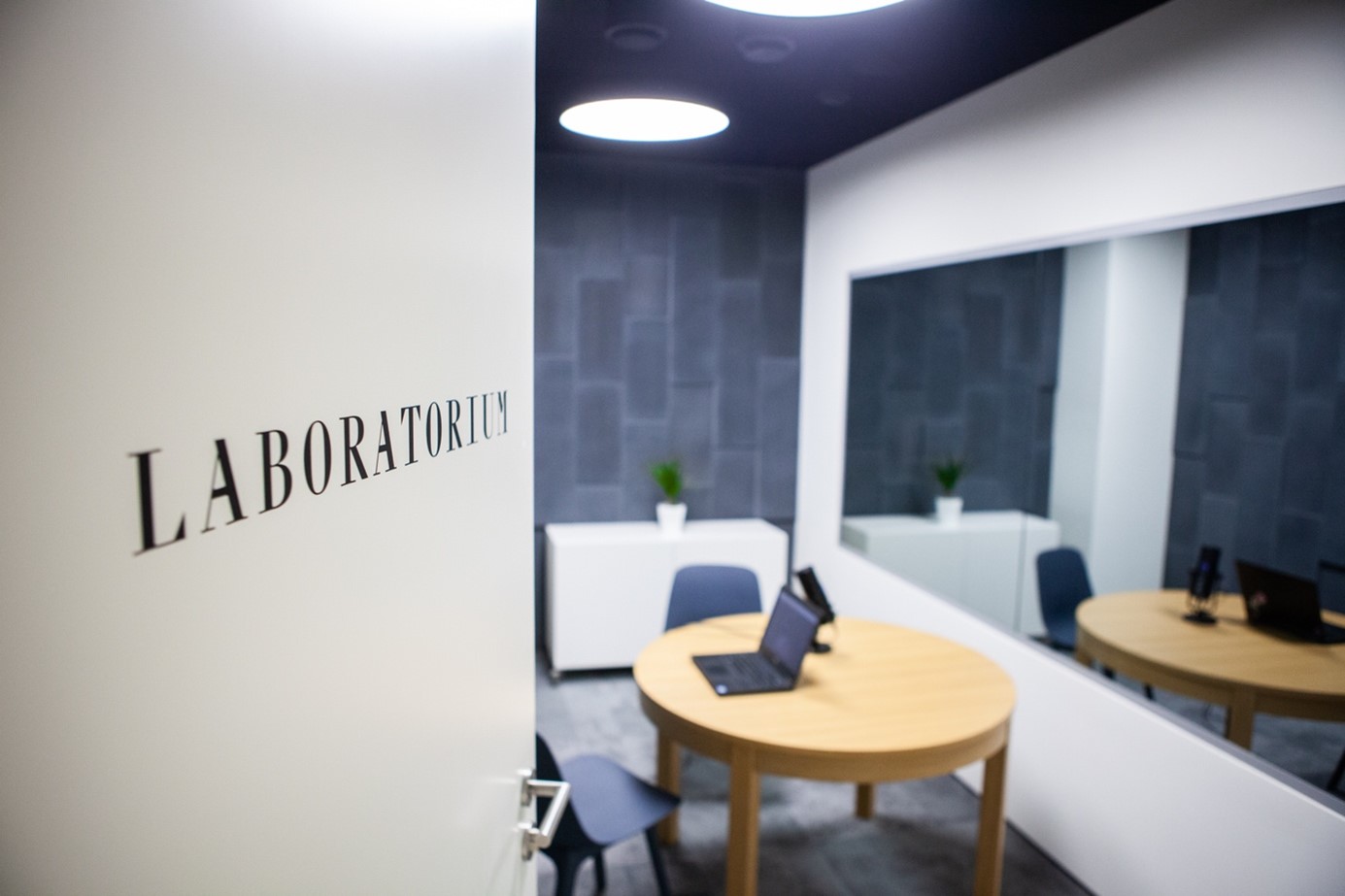
Does the new approach in user experience testing mean the death of laboratory tests?
The uncertainties caused by Coronavirus turned the user experience testing approach on its head. UX Researchers focused on qualitative UX research methods, who had arranged user research interviews in laboratories in the first quarter of 2020, especially experienced the impact of this disruption. Within a few days, it was necessary to completely change the approach to work and overturn the whole setup due to the Covid-19 pandemic announcement. It required a lot of flexibility, but it’s possible. And, to be honest, it wasn’t so bad, because we could quickly learn how to do user research in times of crisis, and it was very informative. At the very beginning we were hoping that it would end soon. But now we know that this situation will take longer, so we want to share some useful information with you.
Read also: What is gamification and how to design it
What did the UX research process look like before?
In our company we’ve been conducting UX tests for more than 10 years, including at least 7 years of remote testing. We always preferred on-site testing, because it seemed to be more convenient and secure. In the typical approach you prepare recruitment criteria and a screener with questions which reflect these criteria. Then you recruit respondents and when the process is finished, invite them to the laboratory, then sign an NDA and consent for recording before the UX research session. After that you can conduct the interviews, based on a scenario. You have stationary equipment and in case of an emergency, the helpdesk is ready to help you. If there are observers, they can watch the testing through the one-way mirror. But Covid-19 forced us to change this approach once and for all.
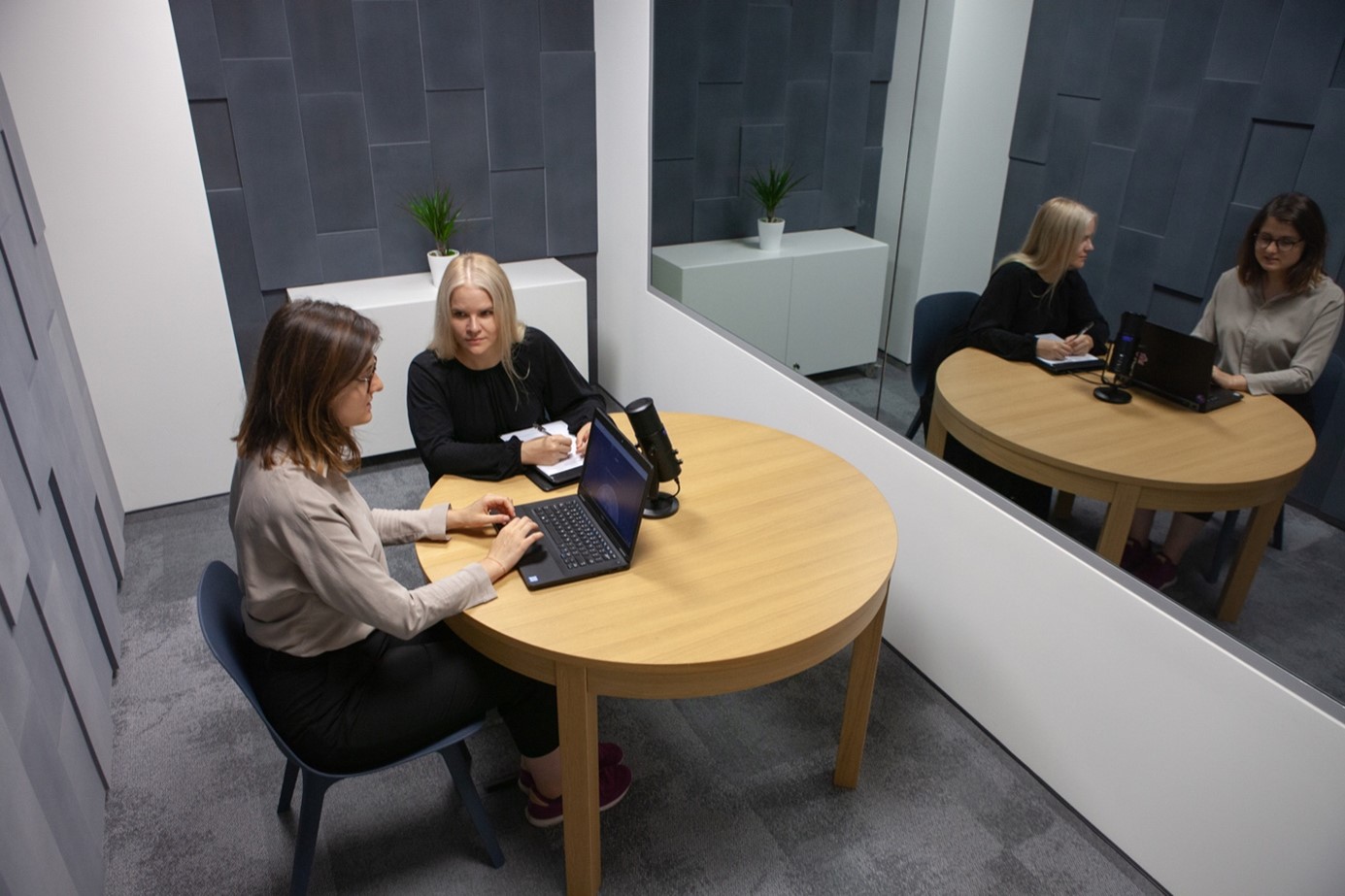
What does the UX research process & online interview preparation look like now?
Suddenly it turns out that remote research has many advantages. It’s as secure and convenient as on-site research. You can record the user’s screen during the interview, plus you have a preview of the respondent’s face and cursor movements. Websites, applications and clickable prototypes can be researched both on desktop and on mobile, so nothing changes compared to the previous approach so far. There is also a possibility for a moderator to share the screen during a session, for example, to show instructions, attachments, props, or user research questions. You can use all the UX research methods and techniques as you used to.
Apart from everything that we have mentioned, the entire recruitment process looks the same, except for signing the consent & NDA remotely which could prove a little challenging for participants, but can be done with your instructions. You can do this through a special account authorized by the government; in Poland it’s a Profil Zaufany and we strongly recommend it.
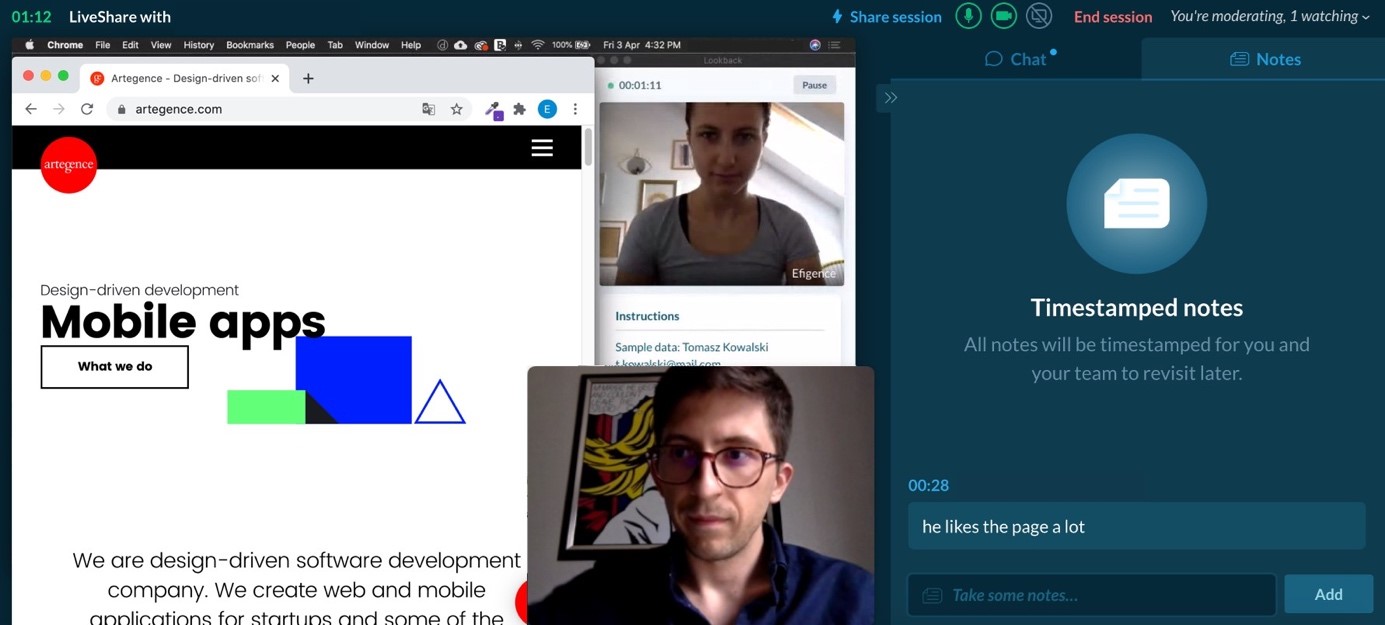
What’s the main difference for the UX researcher?
Remember that you have to be prepared for many more unpredictable situations. You must provide all the users with a manual (especially if the tool they have to use isn’t available in your language and you aren’t sure if they manage to install some plugins etc.), instructions on what the UX process will look like and a list of what they need to prepare or install. Make a test call via the selected tool at least 24 hours before the arranged meeting. Remember to make sure that they have the right equipment – especially when you test prototypes that can only be used on a desktop computer or only on a mobile phone. Be careful with the research on clickable mobile prototypes, which are not responsive and are prepared for a specific smartphone model. You need to make sure at the stage of determining recruitment criteria that the user has the right equipment.
It’s important to provide constant technical & recruitment support during the whole user interview process – but you know that already, right? 😉
Read also: What is a digital customer journey?
How to conduct user research remotely
Interaction is key to a successful remote session. If you want to lead user research just to ask some questions or to check a website that already exists, it’s not so challenging. But if you test a prototype and you want to invite some observers too, we’d like to give you some useful tips for an interview with a user.
You have to take care of confidentiality in particular. Remember to use the right software, to make sure that all the data and recordings are secured properly. Remember also to provide a secure environment – the respondent does not have access to the project without a special link and a password. There are some programs with a possibility to watch the session only through an authorized account, so you can invite observers to participate in it.
There are a lot of UX research tools that you can use, depending on what you need. Of course, there is no perfect tool that combines all the functionalities, but you can choose one that suits you best. Some of them provide recruitment too, but not all.
If it’s only IDI testing, you can use standard programs and applications such as Skype, GoogleMeet, MicrosoftTeams, GoToMeeting, Whereby etc. But if you need more advanced options, as described above, and you recruit users by yourself, we can recommend you Lookback.io. Take a closer look at UserTesting, Userzoom, PingPong and UserBrain too. Or, if you prefer non-moderated tests, Userfeel, TrymyUI, Maze.Design and Loop11, as well as the abovementioned Lookback and UserZoom. If you are looking for something else, there is some software with nice and rare functionalities, such as Optimal Workshop, where you can do some card sorting, or UsabilityHub and Cux.io, where you can capture your users’ first clicks or see heat maps. Many of the UX research tools described above have free trial versions that are worth testing before deciding which one to use.
Advantages of online interviews
What distinguishes remote from lab research is the real-life context. During remote sessions participants use their equipment and perform in an everyday environment. It’s also about flexibility and time saving for all participants – observers, translators, and respondents.
What is cool in some software for remote user testing is real-time observation, which allows constant contact between the moderator and the observers during the session via chat which is invisible to the respondent. It gives a possibility to make & share observations by the entire team, or to submit additional questions to the moderator, so the client can add a question in real-time and receive instant feedback.
The opportunity to watch it online from anywhere in the world and join or leave the session at any time is convenient. You can conduct research in many languages, with respondents from all over the country and even abroad because people don’t have to come to your office anymore. Usually, the main problem in on-site research is that you depend on your location. And if you have clients from abroad in remote UX sessions there are no geographical restrictions and you can stream simultaneous translation to other countries, a very convenient function for multinational teams.
What’s the conclusion?
So, 2020, what a year… right? A lot has changed, but the digital world is still moving forward, and the needs and opinions of users need to be studied. In times of isolation, contact with other people takes place remotely, more and more people use online shopping and many activities that we have conducted so far are switched to remote mode. As we stated, this is convenient and brings a lot of opportunities.
We don’t really think that the new approach to user experience testing means the death of laboratory tests because face-to-face contact with other people is priceless. But, for sure, the times have come for UX researchers to leave their comfort zone. And maybe that isn’t so bad. What do you think?
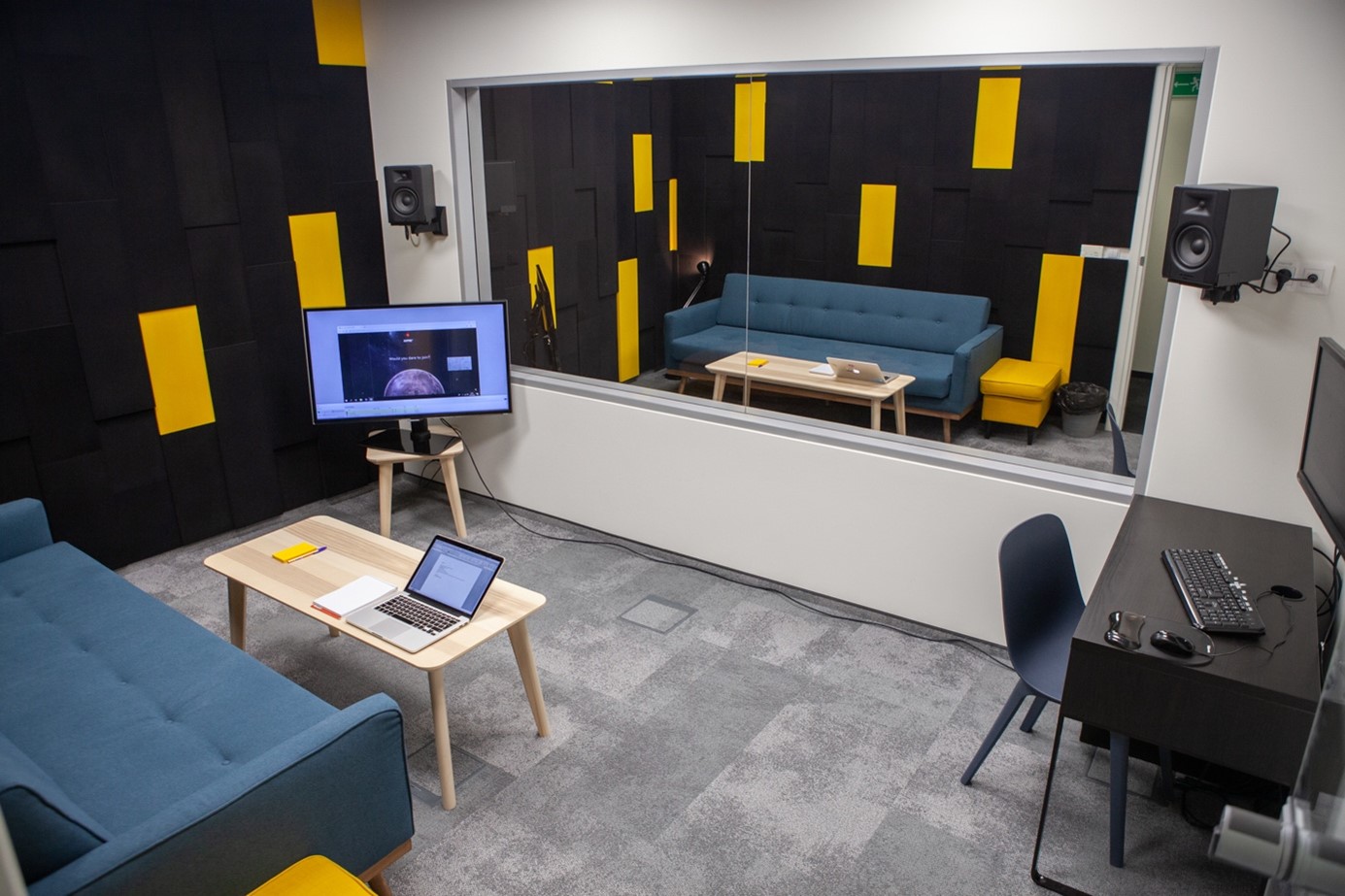
Read also: How emotions can help create outstanding digital products?


